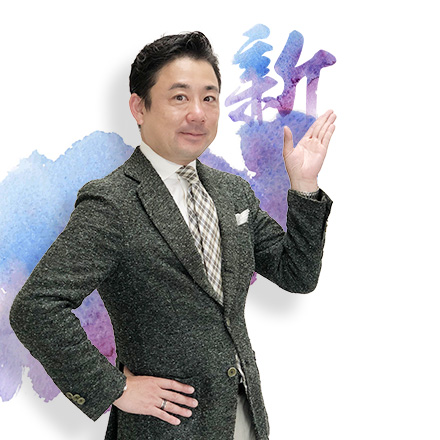
What is the alcohol content of sake? Introduction to sake classification, storage methods and temperature
Sake has a rich variety of flavors. Different sakes have different flavors, from fruity to rice, and from sweet to spicy. Sake is a traditional Japanese brewed wine, and the brewing process is quite sophisticated. In fact, the alcohol concentration of sake , classification method, sake storage method and temperature all directly affect its flavor and shelf life. This article will give you a deep understanding of the mysteries of sake, and help you learn how to preserve sake and adjust the drinking temperature, so that you can appreciate the beauty of sake.
Effect of Sake Alcohol Concentration on Taste
According to Japan's liquor tax law, the alcohol content of sake sold in Japan must be below 22%. The alcohol concentration of sake is usually 15%, and this value not only affects the feeling of being tipsy after drinking, but also affects the balance of sweet, sour, and bitter levels, and has a decisive influence on the taste of the wine. Sake with a higher alcohol content can better show its spicy characteristics, making the taste clearer and sharper; while sake with a slightly lower alcohol content tends to be sweeter and has a milder and smoother flavor. In addition, the alcohol concentration will also affect the aroma and aftertaste of sake.
Some products are labeled as "甘口" (sweet) or "辛口" (spicy), while others are labeled as "Japanese sake degree". The Japanese sake degree reflects the proportion of extracts in the wine (mainly sugar content). When the alcohol content is the same, the lower the Japanese sake degree value, the sweeter the taste; conversely, the higher the value, the spicier the taste.
How is sake classified?
The Sake Service Institute (SSI) divides the aroma and taste styles of sake into four categories: "smoky, mature, refreshing, and mellow" to help consumers choose the right sake. Kaoru is characterized by its rich aroma and delicate and elegant taste, and its representative wine is "Ginjo"; matured sake has a rich and layered aroma and a sweet and thick taste after a long period of aging, and its representative wine is "long-term matured sake"; refreshing sake is characterized by its fresh aroma and light and smooth taste, and its representative wines include "Honjozo sake" and "Nama sake"; mellow sake has a rich and full taste and restrained fragrance, and its representative wine is "Junmai sake".
What do the terms "ginjo sake" and "honjozo sake" that we often hear mentioned above mean? Ultimately, all sake is brewed with rice, koji and water as the basis. The basic classification method is mainly based on the degree of "rice polishing" and whether brewing alcohol is added. The standards are as follows:
a. Differentiate by “rice polishing ratio”
- If the rice polishing ratio is 50% or less and alcohol is added, it is considered "Daiginjo sake";
- Rice polishing ratio between 50% and 60% and with added alcohol is called "Ginjo";
- As for sake with a rice polishing ratio higher than 60%, it cannot be named "Ginjo".
b. Differentiate by whether or not additional brewing alcohol is added
Depending on whether alcohol is added for brewing (to adjust the taste and stabilize the quality), Ginjo can be further divided into:
- If there is no additional brewing alcohol and the rice polishing ratio is less than 50%, it is "Junmai Daiginjo";
- "Junmai Ginjo" is rice that has no additional brewing alcohol and has a rice polishing degree of at least 60%.
Sake that is not "Ginjo" can be divided into "pure rice sake" and "honjozo sake" in "specific name sake":
- "Junmaishu" refers to sake made from rice and koji without any added alcohol.
- "Honjozo sake" refers to sake made from rice and rice koji to which no more than 10% of alcohol is added by weight of the rice.
These classification standards not only affect the flavor of sake , but also determine its price and market positioning. Common sakes on the market include Junmai Daiginjo, Junmai Ginjo and Honjozo, each with its own characteristics, allowing consumers to make choices based on their own tastes and pairing needs.
The following are the characteristics and flavor profiles of different sake classifications :
|
Types of sake |
Rice polishing ratio/brewing method |
Main taste and flavor characteristics |
|
1. Ginjo sake |
We use white rice with a polishing ratio of less than 60% and adopt the special brewing process |
The taste is light, refreshing and mellow, with fruity aromas such as apple and banana |
|
2. Pure rice wine |
Only rice, rice koji and water are used for fermentation, and no alcohol is added for brewing |
Rich in flavor, showing the aroma of rice and original flavor |
|
3. Honjozo sake |
Rice, rice yeast, water and a small amount of brewing alcohol (no more than 10% of the weight of white rice) |
Uniform aroma, refreshing taste and easy to drink, versatile |
|
4. Raw wine |
Without high temperature sterilization, directly bottled and refrigerated |
Fresh aroma, retains the original flavor of raw yeast, direct taste |
|
5. Turbid wine |
After fermentation, part of the mash is retained by coarse filtration, which appears turbid. |
Soft and smooth taste, light flavor |
|
6. Sparkling sake |
Carbon dioxide is added to produce bubbles, and some products have a lower alcohol content |
Refreshing taste, fine bubbles, better flavor after chilling |
|
7. Long-term aged wine |
After 3 to 10 years of maturation |
Amber in color, rich in flavor, with a mature aroma and brown sugar-like sweetness, and a smooth and rich taste |
How to store sake
When storing sake, special care should be taken to avoid direct sunlight and high temperature environments. Since ultraviolet rays and high temperatures will accelerate the volatilization of alcohol and the deterioration of quality, it is recommended to store unopened sake in a cool, ventilated and light-proof environment. The best way to store sake is to place it in a special wine cabinet, refrigerator or a cold and dark indoor environment. After opening the bottle, sake should be stored upright to reduce contact with air. A vacuum stopper can be used to delay oxidation, and then stored in the refrigerator to extend the sake's tasting period. However, it should still be consumed as soon as possible.
Best storage temperature for sake
The best storage temperature for sake is usually between 5°C and 10°C, which can effectively preserve the aroma and flavor of sake. However , the best storage temperature varies for different types of sake :
- "Natural sake" has not been sterilized and must be stored in a low-temperature cabinet at around 5°C to prevent it from going bad;
- Ginjo sake is recommended to be stored at a temperature of about 10°C.
- As for "Junmai Sake", "Honjozo Sake" and ordinary sake, just store them in a dry indoor environment away from sunlight.
Storing sake at an ideal temperature not only prevents quality changes, but also extends the best drinking period of sake and maintains the best taste.
The Mi Ri store brings you popular products directly from Japan
Sake classification , alcohol concentration , storage method and sake storage temperature all directly affect its taste . By gaining a deeper understanding of these key factors of sake, consumers can not only choose sake that better suits their taste, but also achieve ideal results in sake preservation and drinking. Want to have a glass of Japanese sake ? Why not try the Daiginjo Issei Happiness Yamagata sake ? Go to the MiRi store website now to purchase the Japanese products we carefully selected for you and experience the taste of direct delivery from Japan.
References:
1. Introduction to Japanese sake - Japan National Research Institute of Brewing
https://www.nrib.go.jp/sake/pdf/sake_leaflet_c1.pdf
2. Sake 101: The Ultimate Guide to Japanese Sake - Japan Tourism Agency
https://www.japan.travel/tw/guide/sake-shochu/

